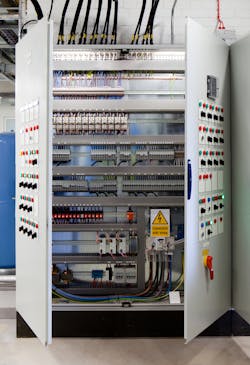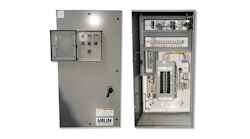Maintaining an enclosure’s integrity
The National Electrical Manufacturers Association (NEMA) has defined a set of standards for specific types of enclosures designed for the application and environment when completely and correctly installed. However, one will find instances in the field of mismatched enclosure types for the application and/or environment.
Understanding that the enclosures were manufactured to meet the defined NEMA rating is critical. This means that any modifications that pierce the enclosure skin during fabrication, or are made when installed in the field, will alter the enclosure rating unless the components are equal to, or greater than, the initial enclosure NEMA rating. Although the enclosure still displays a specific NEMA rating, the modifications have compromised the enclosure integrity, and one can no longer be confident that the environment inside the given enclosure is protected.
This oversight can often result in enclosures not being as effective as they were intended to be. Taking it a step further, this lack of effectiveness can ultimately be both dangerous and costly to the owners and operators that must interact with them on a regular basis.
Types
NEMA breaks down its types into two separate categories: non-hazardous and hazardous locations. It is important to understand that NEMA discusses its types with a very important disclaimer: "when completely and properly installed." This is the most important piece of NEMA's standardizations. If the enclosure is not completely and properly installed, the type can become meaningless.
For example, according to NEMA, Type 1 enclosures are “enclosures constructed for indoor use to provide a degree of protection to personnel against access to hazardous parts and to provide a degree of protection of the equipment inside the enclosure against ingress of solid foreign objects (falling dirt).” This gives personnel an idea of what type of environment a Type 1 enclosure is best suited for.
Then, compare that against a NEMA Type 3R enclosure. According to its definition, a NEMA Type 3R enclosure is one “constructed for either indoor or outdoor use to provide a degree of protection to personnel against access to hazardous parts; to provide a degree of protection of the equipment inside the enclosure against ingress of solid foreign objects (falling dirt); to provide a degree of protection with respect to harmful effects on the equipment due to the ingress of water (rain, sleet, snow); and that will be undamaged by the external formation of ice on the enclosure.”
Notice where these definitions differ. A NEMA Type 3R enclosure is designed to provide protection from the ingress of water, and it will be undamaged by the external formation of ice on the enclosure. In a very basic sense, if an enclosure is earmarked for a location where the elements of rain, sleet or snow are threats, then selecting a NEMA Type 3R enclosure — as opposed to a NEMA Type 1 — is necessary for the level of protection needed.
That part of the equation is understood by many. However, what is all too common in the field for this particular example is a NEMA Type 3R enclosure that wasn’t “completely and properly installed.” Installing a NEMA 1 LB conduit fitting in the top of the enclosure negates any protection against water intrusion.
Due to the improper installation, it might as well not be labeled anything, meaning that it will not be protected against the elements as defined in the NEMA document. This improper installation has turned the enclosure into something that will not perform effectively and could also be dangerous.
Installation
Typically, one will see the integrity of the outer wall of an enclosure compromised. This could be done for a variety of reasons, but often, holes are drilled in an enclosure to install conduit fittings. Once these holes are cut, and if they are not sealed properly around the conduit fitting, leakage can occur. This oversight can have dire consequences.
There are some locations where an enclosure may be exposed to combustible gases or powders. These enclosures are designed to contain the explosive capacity of the various gases that enter. However, if during installation the outer wall is improperly breached, or a fitting is improperly installed, this explosive capacity is ultimately diminished. This is where accidents can occur, and they are all too common in highly volatile environments. It is critical that those involved in the design, fabrication and installation be aware of the requirements and components required to maintain the integrity of the system.
Another common mistake that can degrade the protection rating is the improper addition of various operating devices on the exterior surface of the enclosure. These could be push-buttons, switches or joysticks. This all must be done with the rating of the enclosure in mind. In most cases, the problem lies in not following proper installation procedure and selection of the correct components.
Maintaining an internal environment
Maintaining a consistent internal environment is critical for the equipment inside to function properly. This can be more challenging in some environments than others. There are several strategies that have been developed over the years to better maintain the internal environment of an enclosure. Air conditioning units are often used on enclosures in high-temperature environments, with heaters used in low-temperature areas.
Often, condensation inside the enclosure is not considered. Air-conditioned systems can develop stratification from short circuit air flow. A properly placed circulating fan will assist in the thorough distribution of temperature in the enclosure.
A low-wattage small light bulb in the bottom of the enclosure can reduce condensation. Installing a sun shield off the enclosure exterior prevents direct exposure from the sun. Other strategies have been designed, but what’s most important is that the internal environment is being maintained one way or another.
There are three critical elements to ensuring that an enclosure is installed effectively and safely. The proper enclosure must be selected by comparing its NEMA rating to its intended environment. The integrity of the enclosure cannot be compromised during fabrication and installation, and, finally, the internal environment must remain favorable to the equipment located inside.
Fred Gridley is a control engineer for Valin Corporation, a leading technical solutions provider for the technology, energy, life sciences, natural resources and transportation industries. Valin offers personalized order management, on-site field support, comprehensive training and applied expert engineering services utilizing automation, fluid management, precision measurement, process heating and filtration products.


